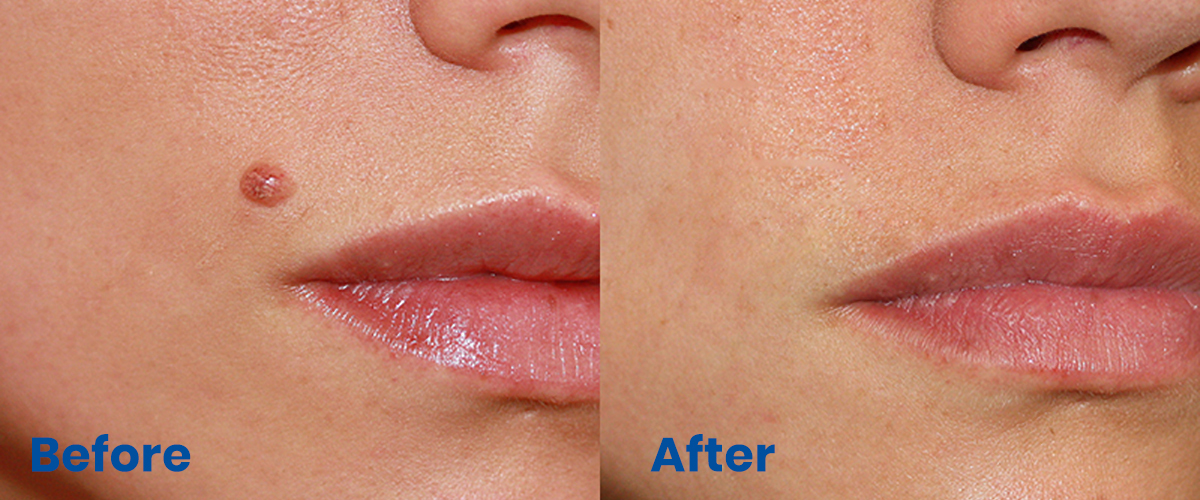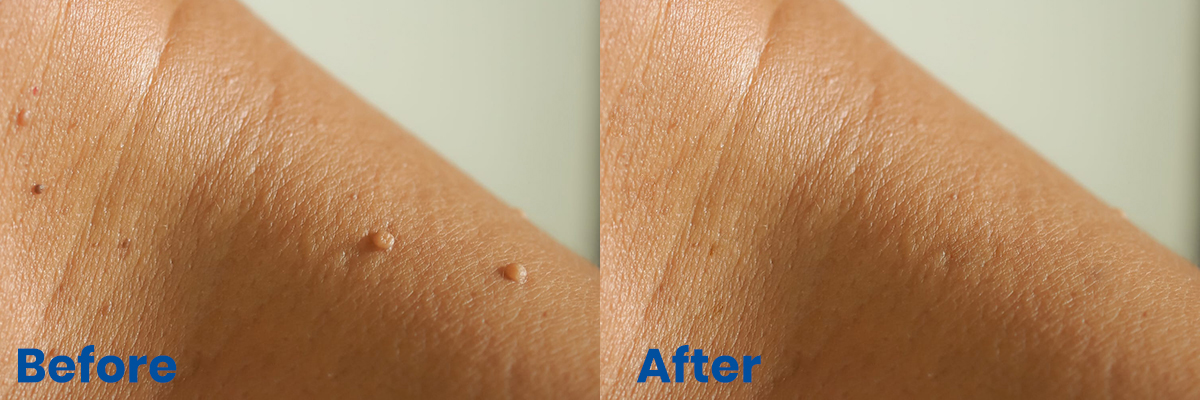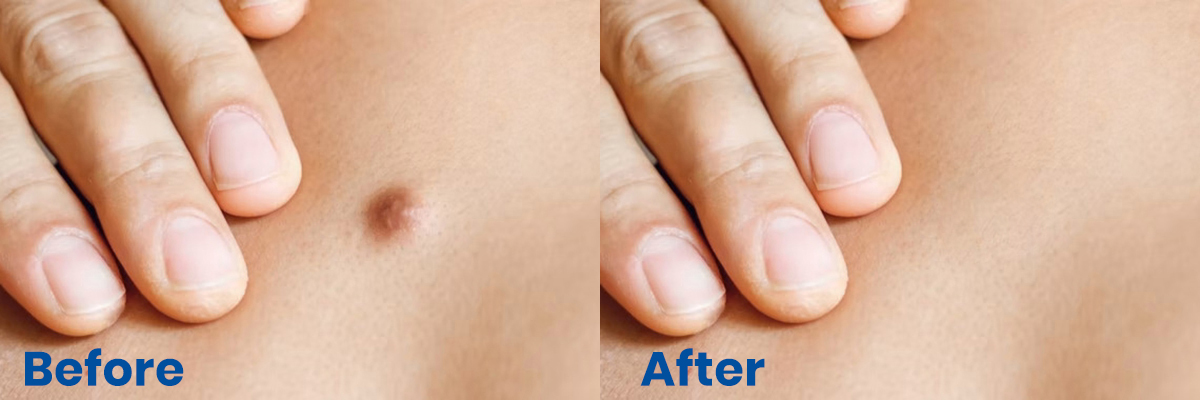MOLE | WART
SKIN TAG
CYST REMOVAL
MOLE REMOVAL
A mole may need to be removed from the skin for several different reasons. Regardless of the reason behind the need for mole removal surgery, putting your trust in an experienced doctor is essential to ensuring the result is both thorough and as aesthetically pleasing as possible. The goal of any surgical mole removal is to provide the patient with satisfactory results through careful removal and minimal scarring. Our skilled doctors take extra care to remove all traces of the mole and, when necessary, some of the surrounding tissue, while still leaving as little scarring behind as possible.
Many patients choose mole removal for cosmetic purposes. Either displeased with the appearance or the mole’s location, patients seek out mole removal to improve the skin’s appearance and improve confidence. If the concern is mole removal on the face, we take extra care to remove only the necessary tissue for a positive cosmetic result. Before a mole removal surgery is scheduled, our physician reviews your concerns, goals, and health history to ensure a smooth procedure resulting in complete satisfaction.

SKIN TAGS REMOVAL
A common skin growth in which a short, narrow stalk sticks out. Skin tags are usually harmless and painless. The main symptom is a growth on the skin, often on the neck, upper chest, underarms, and eyelids. They may become irritated from rubbing against clothing. Most skin tags don’t require treatment. If a skin tag is irritated or its appearance is bothersome, our clinician can remove it.
The main symptom is a growth on the skin, often on the neck, upper chest, underarms, and eyelids. They may become irritated from rubbing against clothing.
The procedure is simple, easy, painless (Dr. Pardo inject local anesthesia), with no downtime and last around 30-45 minutes.
*There is no guarantee of specific results. Individual results may vary*

WART REMOVAL
Warts are benign/non-cancerous skin growths caused by an infection to the top layer of skin by a type of human papilloma virus (HPV). Warts usually appear on the hands or feet but can also affect other areas of the body. There are over 150 human papilloma viruses that can cause warts. The virus is believed to enter the body through skin that has been cut or damaged in some way. Warts are contagious and can be spread by contact with the wart or something that has touched the wart.
Risk of infection can be increased by a low immune system, eczema, or the use of public showers. Warts are typically small, skin colored, and feel rough to the touch but in some instances, they can appear dark, flat, and smooth. There are several types of warts including: common warts (verruca vulgaris), foot warts (plantar warts), flat warts, filiform warts, and genital warts.

The removal of warts may include the use of topical medications. One topical treatment is the use of salicylic acid which softens abnormal skin cells and dissolves them. A blistering agent known as Cantharone (cantharidin) may also be used. Cantharone is a topical that causes the skin under the wart to blister, lifting the wart off the skin. When the blister dries, the wart falls off with the blistered skin.
The majority of wart removals involve simple procedures performed in our office. Cryotherapy or freezing is the most common treatment for warts in adults and older children if quick removal is desired. Electrosurgery is another option for immediate wart removal. It involves passing a high frequency electric current through the wart. The tissue is destroyed by the heat generated by the electric current and the wart is removed.
There are no cures for the viruses that cause warts. Warts may return in the same spot or appear in a new one. In some instances, it can seem that new warts appear as soon as the old one has been removed. To prevent this, Dr. Ulmer has developed a unique, painless triple treatment method.
Dr. Pardo’s painless wart removal treatment has an amazing 95% cure rate and involves the following:
- Hyfrecation (a form of electrosurgery)
- Snip Removal
- Light Freezing
*There is no guarantee of specific results. Individual results may vary*
CYST REMOVAL
If you’ve ever noticed a small bump under your skin that feels like a ball, you’ve most likely had a sebaceous cyst. While there are several types of cysts, sebaceous cysts are the most common, and they form when the skin turns in on itself. As the skin cells grow, they form a ball, and the pocket under the skin tries to get rid of these skin cells but they remain trapped inside, causing the cyst to grow. This can happen for a number of reasons, including blocked sebaceous glands and swollen hair follicles. Some of the most common places for these cysts to develop are the scalp, ears, back, face, and upper arm, although they can occur anywhere on the body except for the palms of the hands and soles of the feet.
If left untreated, a cyst can either perpetually grow or rupture and cause extreme pain. So, what should you do if you have a cyst? You may have seen YouTube videos of people popping their cysts, but if that’s the kind of treatment that comes to mind – don’t do it! The skin will continue to produce cells and refill the pocket as long as the pocket is there, meaning in order to make sure the cyst does not come back, the pocket must be removed.

